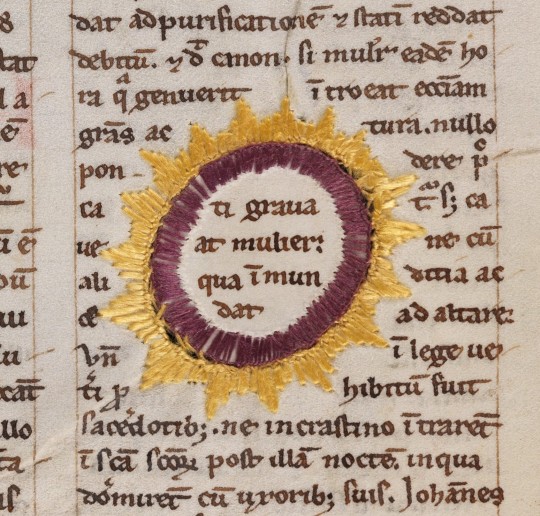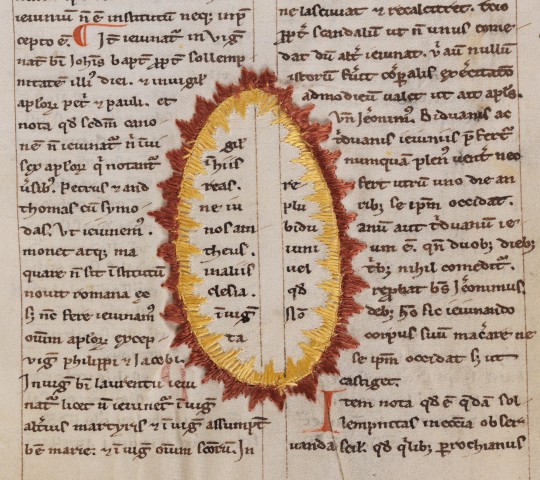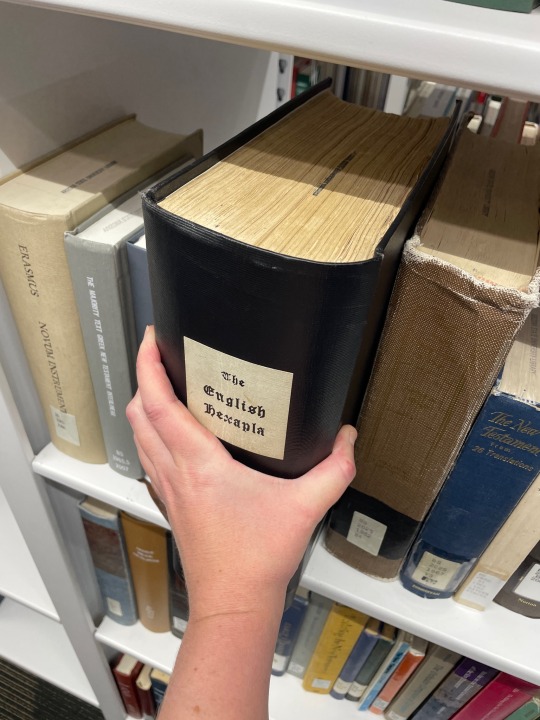Text
My archive has several collections that belong to "depositors", other institutions that do not have space of their own. When they want them back for a while they go on "depositor loan". It sounds like the word you are looking for is the one you already have!
There has been a recent surge in repatriation/give everything back posts in Museum Tumblr so I thought I would share a story I found out about recently.
Background; I did some volunteer work for the Canadian Museum Association that included looking pretty in depth at a few exhibitions from 2023. One of them really caught my eye because it goes into an aspect of Originating Cultural Relationships that I don't see reflected in the public sector a lot even though its not that uncommon among my coworkers.
So back in the 1860s the Prince of Wales was gifted a series of baskets from the Michi Saagiig [Mississauga] women. These were a gift and have remained in the Royal Collection Trust ever since.
It is agreed upon by all parties that the Royal Collection is doing a good job caring for the baskets. However, the baskets still represent the women, the ancestors, who made them. They are family. And the living Michi Saagiig missed their grandmothers and aunts.
So the Peterborough Museum and Archives [Peterborough Canada, not the one in the UK] worked out a temporary loan from the Royal Trust Collection to bring the ancestors back 'for a visit' to their ancestral lands of Nogojwanong-Peterborough.
This was facilitated by the Museum, but the partnership was multi way, between Hiawaitha First Nation, Mississauga Nation, Museum, and the Trust.
This exhibition ran from April to November last year and was ALWAYS meant to be a 'visit' - that language is deliberate. The baskets came home for a visit before returning to their new home in the UK.
here's an article about it
Now, from a layman's perspective this might seem like a small victory - the baskets, the makakoons, didn't even stay in Hiawatha which is the modern location of the village they were made in. And it was only a few months, but still cool. Still pretty neat.
But from my perspective this is MASSIVE. This means that the ROYAL FAMILY has agreed to send things home - at least on the short term. This will bring about change in British collection law. It won't be quick. But we will see more and more British institutions sending things on visits. And eventually we will see repatriation. It is going to take a very long time, and this is by no means the first rung on the ladder. But
THE MAKAKOONS CAME HOME FOR A VISIT
689 notes
·
View notes
Text



more medieval manuscript repairs
all from a miscellany containg thomas de chabham's "summa poenitentialis", southern germany (?), first half of the 13th c.
source: Basel, Universitätsbibl., B X 1, fol. 56r, 67r, and 71r
5K notes
·
View notes
Text
Private correspondence has revealed that the objection was to digitizing them, which is fair enough.
I do not have parallel experience, but I have treated a few books that had bombs dropped on them during the Blitz. Whoever rebacked them after the war decided to just cut all the sewing and bits of the spinefolds off, and the textblock was just held together with glue. Obviously the leather was awful as well, so we have an entire collection with the boards falling off and disgusting with red rot.

Many hours did I spend guarding tissue around the folds and sewing. The guarding was already creating a lot of swell so I went for a bypass structure, where you alternate between two or more sections as you sew. You can see the thread zigzag between the sections.

SOMETIMES A BOOK IS TOO BIG!! THIS IS ONE OF THOSE TIMES!
😤😤😤

318 notes
·
View notes
Text
I, by contrast, love a healthybig book.


Fond memories of hauling books the size of a child onto my shoulder down a ladder, wrestling them onto a measuring jig, and making boxes so big they had to be cut one tray at a time.
SOMETIMES A BOOK IS TOO BIG!! THIS IS ONE OF THOSE TIMES!
😤😤😤

318 notes
·
View notes
Photo


I finished the babybatblanket. I threw it in the washing machine and I desperately hope it comes through all right.
7 notes
·
View notes
Photo


The blanket progresses.
#knitting#batman#raking light sure shows the flaws doesn't it#this is Sirdar Snuggly DK in light navy#which is less soft than I expected but my expectations may be unreasonable#I live in a pile of fleece blankets
4 notes
·
View notes
Photo

Here is a change of pace for you. I knit this swatch of a baby blanket for a coworker who is intensely interested in Batman. It is just cabling one stitch around so it should be easy to do upside down on the other end. I put together a quick pattern for it if anyone is interested. I knit the white bits with seed stitch in the grey bits.
23 notes
·
View notes
Text


I just got back from visiting my dismal homeland, where I distributed these shawls.
I am not delighted with the first one (Shetland Forest Garden). The pattern wanted me to start at the tip of the center triangle, leave that on a holder while I picked up the other two edges, knit the lacy bit, then knit the border perpendicular all the way around. Obviously this meant it got all distorted and had a big lump in the middle and I could not stretch the bottom properly. Also, the border chart had an eight-stitch repeat but the last chart of the body had a ten-stitch repeat so I had to modify it so it would line up. I was a bit embarrassed to give it to anyone but I never wanted to see it again.
The second one was good fun (Omelet). I reblocked it as a crescent shawl because I have decided I do not like how triangular shawls sit across the shoulders, which it did not seem to appreciate much. It seems to have turned out all right, and the recipient is certainly delighted.
4 notes
·
View notes
Photo

Who wants to make a book? You do!
These images come from a pdf I made a while ago, so the spacing is a bit funny, and Tumblr crushed them to terrible quality. You can see the original here.
I used scrap printer paper because it was around, but you may want to use something nicer. The gsm (grams per square meter) should be listed somewhere. 100–140 is book weight, 150-200 is thicker drawing paper, more than 250 is a bit ambitious.




















52 notes
·
View notes
Photo

Do you like my Conservation By Design/Pride/Black Lives Matter mug?
0 notes
Photo


We are having a good old clean up in the studio, and I discovered a marvelous box of environmental monitoring through the ages.
First up we have a lovely yellow whirling/sling hygrometer/psychrometer (all four combinations seem to be valid with varying popularity). It has two thermometers, one with a wet sock over the bulb. You spin it around and use a psychrometric chart to find the relative humidity based on the difference in temperature between the two. It is undoubtedly the most reliable of any of these because it does not need calibration.
The miserable object below it is an elderly Tinytag datalogger, which has a port to connect it to a computer at the top so one assumes it works the same way as the new ones (the nice bumblebee at the bottom right). It monitors and records the temperature and humidity readings every ten minutes or whatever interval you set, then you can download the data to make a graph to frown at.
There is a dial with needles pointing to the temperature and relative humidity. It is likely to determine the humidity based on the tension on a horsehair. The big thermohygrographs work the same way, but I love them more.
Next we have a handheld environmental monitor. It probably measures the relative humidity based on electrical resistance. I still use one of these, although not this particular model. It seems to be a bit confused, since it thinks the highest temperature it was exposed to was 70ºC, and the lowest was -50ºC.
Below, we have the current array of equipment. There are two freestanding monitors (one out of battery), and one nice Tinytag bumblebee as described above. The port is underneath. We also have Hanwell brand dataloggers that transmit their data by radio in real time to a system controlling the heaters, air conditioners, and dehumidifiers.
But it is much less satisfying to swing a Hanwell around like a whirling hygrometer.
#book conservation#preventive conservation#I appear to have abandoned this blog for a while#sorry everyone#here is a nice long post
1 note
·
View note
Note
Do you mind sharing what pattern you are using for starshawl!
Of course! It is Celestarium by Audry Nicklin with Stellar Wave edging. The photo that went around today did not show it to best advantage. It is my very most favorite pattern and I loved it so much I made it twice.
4 notes
·
View notes
Note
Hi! I'm following your blog for quite some time and I know you used to do bookbinding too and wanted to ask since I'm now stuck in a horrible dilemma - what do you think of recycled vellum books and covers? Atm new parchment is super expensive (esp the quality one, vellum) and there's no way I could afford it, but used vellum is really cheap, 10 - 20$ for (large sheets) 1800s law documents (loans & bank stuff) if you're lucky on ebay but that means I gotta cut up and scrub an antique :C
Don’t tell anyone I said so, but that sounds perfectly reasonable. At school we bought deeds off eBay to practice parchment repairs because no one would care if we tore them up. You would also be participating in a long tradition of using manuscript waste for bindings. Most of the time they did not bother to clean the ink off, so there are a lot of quite handsome bindings covered in big old choral book pages. You have my blessing.
#bookbinding#extremely ethical conservation#by the by#goatskin parchment is just as good as vellum#although sheepskin is still trash#just note that manuscript parchment might not be as thick#so your bindings might not behave the same way#Anonymous
4 notes
·
View notes
Photo

I was talking to someone the other day and I mentioned cleaning the polytunnels in the archives, and they were delighted by the concept of a book-greenhouse.
We keep items that are the most sensitive to environmental fluctuation in the polytunnels, because they are markedly more stable than the rest of the archive. Thank you, book-greenhouse.
#book conservation#it had not really connected for me that polytunnels serve a more popular function#you put books in your polytunnel everyone knows that is what they are for
3 notes
·
View notes
Photo


Hot cross buns, chelsea buns. All the buns.
1 note
·
View note
Photo

I spent this morning assembling my backlog of very thin boxes which needed to be finished by hand. I made twentysomething in four hours, which I is an improvement on the standard entirely handmade four flap box.
#book conservation#I know hearing about boxes all the time might not be the most thrilling content#but it is helping a lot more books than we can treat individually#also the new building will have a water based fire protection system#so they definitely need enclosures
2 notes
·
View notes
Photo

Must you? In the middle of my bind-off?
26 notes
·
View notes